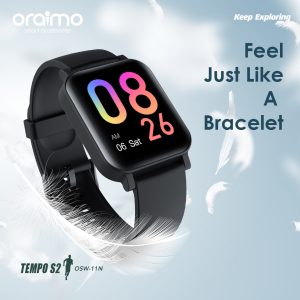Contents
Imagine a world where your wrist is no longer just a place for a simple timepiece, but a portal to a world of possibilities. The future of wearables has arrived with the introduction of smart watches equipped with cutting-edge touchscreen technology. These innovative devices offer a seamless blend of functionality and style, allowing you to effortlessly navigate through apps, receive notifications, track your fitness goals, and so much more. With the power of touch at your fingertips, the possibilities are endless. Experience the next generation of wearable technology with these smart watches and unlock a whole new level of convenience and connectivity.
Introduction
Definition of wearables
Wearables refer to a category of electronic devices that can be worn on the body, typically in the form of accessories or clothing, and are equipped with advanced technology to provide various functionalities. The most popular and versatile wearable devices are smart watches, which are wrist-worn devices that combine the features of a traditional timepiece with the capabilities of a smartphone.
Overview of smart watches
Smart watches have gained immense popularity in recent years due to their ability to perform a wide range of tasks, such as receiving notifications, making calls, tracking fitness activities, and accessing various applications. These devices are designed to be worn on the wrist, providing convenience and easy accessibility to information and functionalities right at your fingertips.
Importance of touch screen technology
One of the key features that have revolutionized the usability and functionality of smart watches is touch screen technology. With the integration of touch screens, smart watches have become more user-friendly and interactive, allowing users to navigate through menus, launch applications, and interact with the device using simple gestures and taps. Touch screen technology has significantly enhanced the user experience, making smart watches an indispensable technology for many individuals.
Evolution of Smart Watches
Early smart watches
The concept of smart watches can be traced back to the early 1980s when companies like Seiko and Casio introduced wristwatches with basic computing functionalities such as calculator, stopwatch, and calendar. However, these early devices lacked the advancements in technology required to be considered true smart watches.
Advancements in smart watch technology
Over the years, smart watches have evolved at a rapid pace, incorporating advanced features and technologies. The introduction of Bluetooth connectivity enabled seamless synchronization with smartphones, allowing users to receive notifications, make calls, and even control music playback directly from their wrist. With the integration of sensors such as heart rate monitors and GPS, smart watches became powerful fitness tracking devices, catering to the growing demand for health and wellness monitoring.
Integration of touch screen technology in smart watches
The integration of touch screen technology in smart watches has been a game-changer. It has transformed the way users interact with their devices, offering a convenient and intuitive user interface. With touch screens, users can simply swipe, tap, or pinch to navigate through menus, launch applications, and even respond to messages. This technology has expanded the capabilities of smart watches and made them more accessible to users of all ages and technical proficiency.
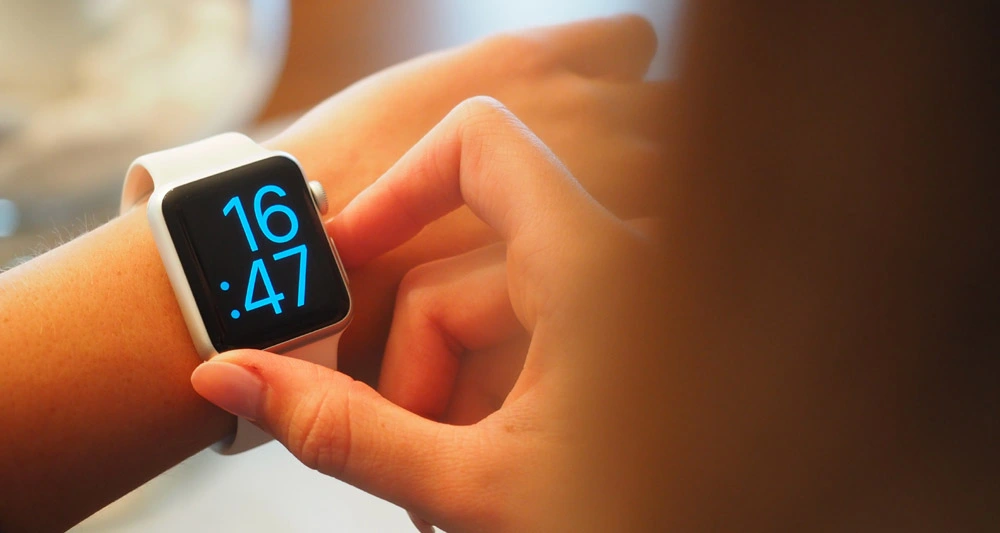
Benefits of Touchscreen Technology in Smart Watches
Enhanced user experience
The use of touch screens in smart watches provides a highly intuitive and immersive user experience. With the ability to directly interact with the device’s interface, users can effortlessly navigate through menus, access applications, and perform various tasks with ease. The touch screen technology enhances the usability of smart watches, making them more intuitive and user-friendly.
Improved navigation and accessibility
Touch screen technology enables seamless navigation through the different features and functionalities of a smart watch. With a simple swipe or tap, users can switch between watch faces, check notifications, control music playback, and access their favorite applications. The touch screen interface eliminates the need for physical buttons or dials, providing a more streamlined and accessible user experience.
Customization options
Another advantage of touch screen technology in smart watches is the ability to customize the interface according to individual preferences. Users can choose from a variety of watch faces, change the layout of the app icons, and even personalize the overall appearance of their device. The touch screen interface makes it easy and convenient to personalize the smart watch, allowing users to tailor it to their unique style and preferences.
Integration with smartphone functionalities
Smart watches with touch screen technology seamlessly integrate with smartphones, extending their functionalities and providing added convenience. Users can receive notifications, answer calls, and respond to messages directly from their wrist, without having to reach for their smartphone. The touch screen interface facilitates quick and easy access to smartphone functionalities, enhancing the overall user experience and minimizing the need for constant phone interaction.
Challenges and Limitations
Limited screen size
One of the primary challenges with touch screens in smart watches is the limited screen size. The compact form factor of smart watches makes it challenging to incorporate larger screens, resulting in restricted display real estate. While touch screen technology provides convenience, the smaller screen size can sometimes lead to a cramped user interface, making it difficult to interact with certain elements or perform complex tasks.
Battery life
The integration of touch screen technology in smart watches can have an impact on battery life. Touch screens require continuous power supply to detect and process touch inputs, which can drain the battery faster. Manufacturers have made significant improvements in optimizing power consumption, but battery life remains a concern for many smart watch users. However, advancements in battery technology and power management techniques are expected to address this limitation in the future.
Input accuracy
The accuracy of touch inputs on smart watch touch screens can sometimes be a challenge. The smaller screen size and the need for precise gestures can result in occasional errors or unintended touches. This can be particularly frustrating for users when performing tasks that require precision, like typing a message or selecting a specific option. Manufacturers continue to work on improving touch screen accuracy to provide a more seamless and accurate user experience.
Water resistance
Water resistance is a crucial aspect of smart watches, especially considering their widespread use in fitness and outdoor activities. However, the integration of touch screen technology can pose challenges in maintaining water resistance. While some smart watches offer water resistance with touch screen functionality, there are limitations in terms of submerged touch or use in extreme water conditions. Manufacturers are constantly striving to enhance water resistance without compromising touch screen usability.
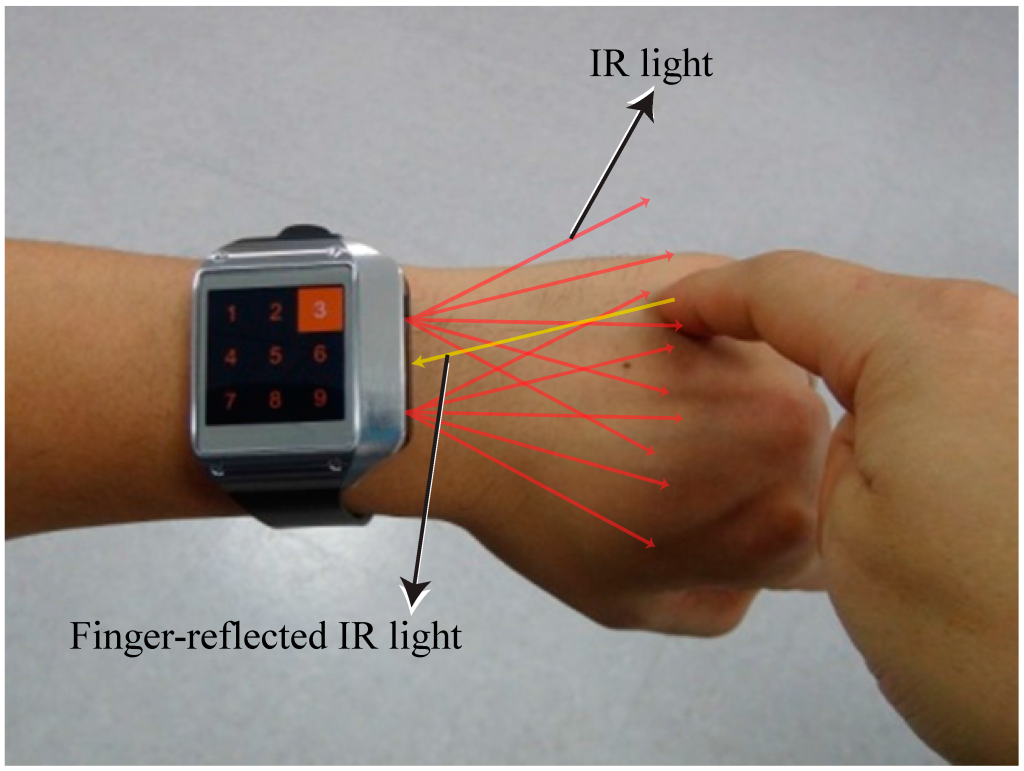
Future Trends in Smart Watches
Flexible and bendable displays
One of the exciting trends in smart watch technology is the development of flexible and bendable displays. These displays have the potential to revolutionize the design and form factor of smart watches, enabling curved screens that wrap around the wrist. This technology opens up possibilities for more immersive and comfortable user experiences, as well as enhanced aesthetics.
Advanced health and fitness tracking
The future of smart watches lies in the advancement of health and fitness tracking features. With the integration of more advanced sensors and algorithms, smart watches will be able to provide detailed and accurate measurements of heart rate, blood oxygen levels, sleep patterns, and other vital health metrics. This will enable users to monitor and manage their health in real-time, empowering them to make informed decisions about their well-being.
Integration with augmented reality
Augmented reality (AR) is a technology that overlays digital information and virtual objects onto the real world. The integration of AR capabilities in smart watches has the potential to enhance user experiences by providing contextual information, navigation guidance, and interactive virtual elements directly on the wrist. This opens up new possibilities for gaming, navigation, and productivity applications.
Enhanced connectivity with IoT devices
The Internet of Things (IoT) is a network of interconnected devices that communicate and share data with each other. Smart watches with touch screen technology can act as a central hub for controlling and monitoring IoT devices such as smart home appliances, security systems, and wearable health trackers. The seamless integration and control of IoT devices through smart watches will simplify the user experience and improve the overall efficiency of managing connected devices.
Innovation in Touchscreen Technology
Introduction of OLED and AMOLED screens
The introduction of OLED (Organic Light-Emitting Diode) and AMOLED (Active Matrix Organic Light-Emitting Diode) screens has significantly improved the display quality of smart watches. These technologies offer vibrant colors, deep blacks, and wide viewing angles, enhancing the visual experience. OLED and AMOLED screens also consume less power compared to traditional LCD screens, contributing to extended battery life.
Improvements in haptic feedback
Haptic feedback refers to the tactile sensations produced by a device to provide feedback or simulate physical interactions. Smart watches with touch screen technology are incorporating advancements in haptic feedback to provide more realistic and immersive user experiences. Users can now experience subtle vibrations, taps, or even simulated button clicks, making interactions with the touch screen more engaging and intuitive.
Gesture recognition
Gesture recognition technology enables smart watches to detect and interpret specific hand and finger movements, allowing for more intuitive and natural interactions. Users can perform gestures like swiping, pinching, or rotating to navigate through menus, zoom in or out, and perform various actions. Gesture recognition enhances usability and makes smart watches more accessible to users who find touch screen interactions challenging.
Advancements in display resolution and pixel density
The continuous advancements in display technology have led to higher display resolutions and pixel densities in smart watches. This improvement results in sharper and more detailed visuals, making text, images, and app icons clearer and easier to read. The increased pixel density also contributes to a more immersive experience when interacting with touch screen elements, providing a more satisfying and visually appealing user interface.
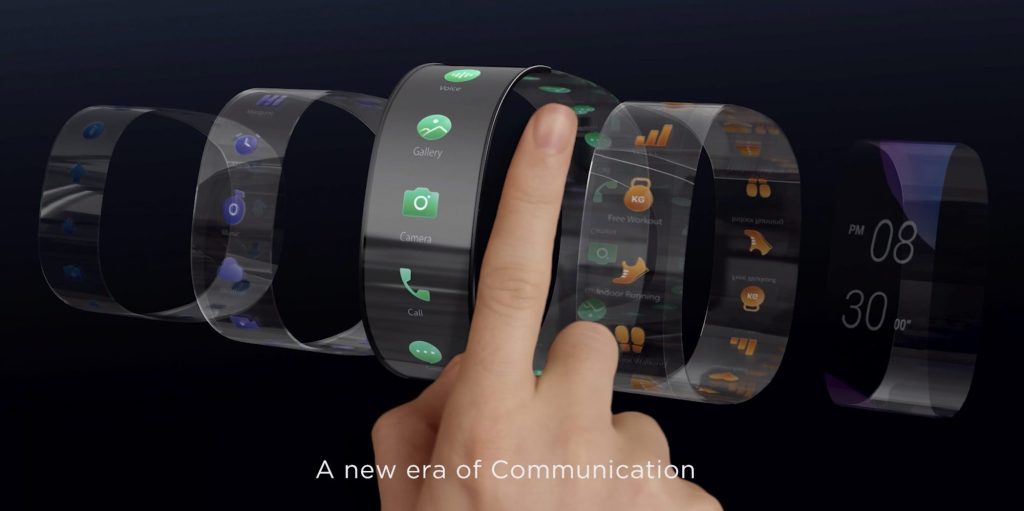
Applications and Use Cases
Fitness and health monitoring
Smart watches equipped with touch screen technology have become one of the most popular fitness and health tracking devices. They can monitor heart rate, track physical activities, provide workout guidance, and even analyze sleep patterns. Users can view their fitness data, set goals, and receive personalized recommendations, all through the touch screen interface. Smart watches are empowering individuals to take control of their health and well-being.
Communication and notifications
One of the primary uses of smart watches is to stay connected and receive notifications directly on the wrist. Users can view incoming calls, read messages, check social media updates, and even respond to notifications, all without the need to reach for their smartphones. The touch screen interface makes it easy and convenient to manage incoming communications, providing a quick glanceable interface for staying connected on the go.
Smart home control
Smart watches with touch screen technology can act as a central control hub for managing smart home devices. Users can control lights, thermostats, security systems, and other IoT-enabled home appliances right from their wrist. The touch screen interface simplifies the process of managing and controlling multiple devices, offering a convenient and seamless way to interact with the connected home.
Navigation and maps
Smart watches equipped with GPS capabilities and touch screen technology provide a convenient navigation solution for users. Whether navigating on foot, cycling, or driving, users can access turn-by-turn directions, view maps, and receive navigational prompts directly on their wrist. The touch screen interface enables users to input destinations, zoom in and out, and explore routes effortlessly, making navigation a breeze.
Market Analysis and Industry Players
Global smart watch market overview
The global smart watch market has witnessed rapid growth over the years, driven by increasing consumer demand for wearable technology and the growing adoption of smartphones. According to research by Grand View Research, the global smart watch market size was valued at $20.63 billion in 2020 and is expected to reach $134.5 billion by 2028, with a compound annual growth rate (CAGR) of 23.5%.
Key players in the smart watch industry
The smart watch industry is highly competitive, with several key players dominating the market. Companies like Apple, Samsung, Garmin, Fitbit, and Huawei have established a strong presence in the smart watch market, offering a wide range of devices with touch screen technology and advanced features. These industry leaders are constantly innovating and introducing new products to meet the evolving needs and preferences of consumers.
Competitive landscape and market trends
The competitive landscape of the smart watch industry is characterized by intense competition and continuous innovation. Manufacturers are focusing on introducing new features, improving design aesthetics, enhancing health and fitness tracking capabilities, and expanding compatibility with third-party applications and services. The market trends indicate a growing demand for smart watches with touch screen technology, as consumers seek more interactive and intuitive wearable devices.
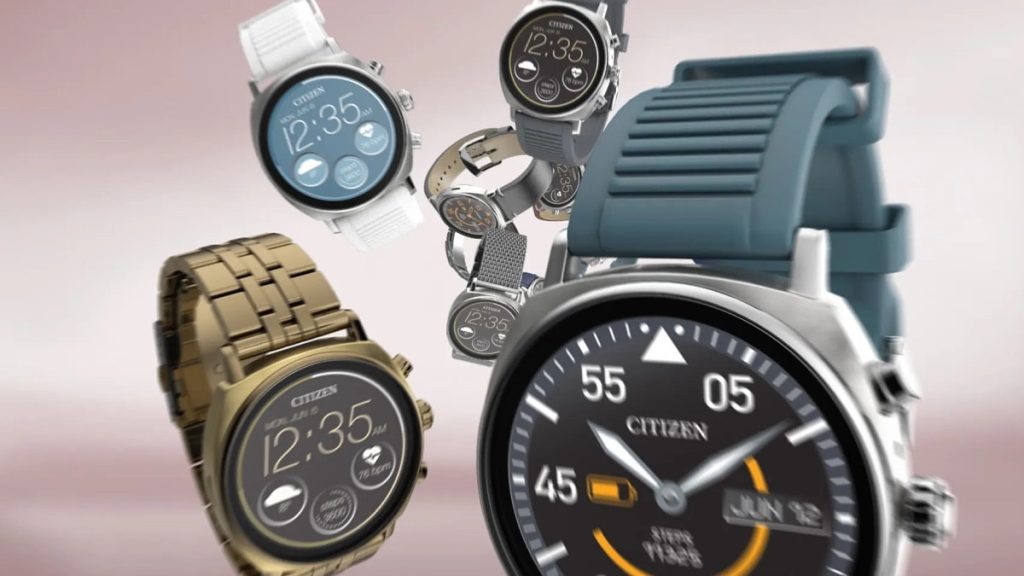
User Privacy and Security
Privacy concerns with wearables
The increasing use of smart watches and other wearable devices has raised concerns about user privacy. As these devices collect and store personal data, such as health metrics and user activity, there is a risk of unauthorized access or misuse of sensitive information. Manufacturers and regulatory bodies are addressing these concerns by implementing strict privacy policies, secure data storage, and user consent-based data sharing practices.
Data security measures
To ensure the security of user data, smart watch manufacturers are implementing robust encryption protocols, secure data transfer mechanisms, and authentication measures. This protects user information from unauthorized access or tampering, safeguarding their privacy. Additionally, regular software updates and bug fixes are crucial in addressing potential security vulnerabilities and ensuring a secure user experience.
Regulatory framework and compliance
As wearable technology continues to proliferate, governments and regulatory bodies are actively developing and implementing frameworks to protect user privacy and ensure data security. Laws and regulations, such as the General Data Protection Regulation (GDPR) in Europe, mandate transparency in data collection practices, consent-based data processing, and user control over their personal information. Compliance with these regulations is essential for smart watch manufacturers to build trust and maintain consumer confidence.
Conclusion
Summary of the future potential of smart watches with touchscreen technology
Smart watches with touch screen technology have come a long way, transforming the way we interact with wearable devices. The integration of touch screens has enhanced usability, providing an intuitive and interactive user experience. The future potential of smart watches is bright, with advancements in flexible displays, health and fitness tracking, augmented reality, and IoT connectivity.
Closing thoughts on the impact of wearables on society
Wearables, particularly smart watches with touch screen technology, have become an integral part of our lives, empowering individuals to stay connected, monitor their health, and access information conveniently. These devices have the potential to revolutionize various industries, including healthcare, fitness, communication, and home automation. The impact of wearables on society is immense, shaping how we interact with technology and enabling us to lead more connected and healthier lives.






